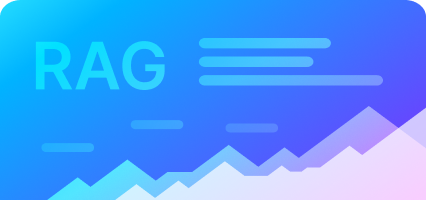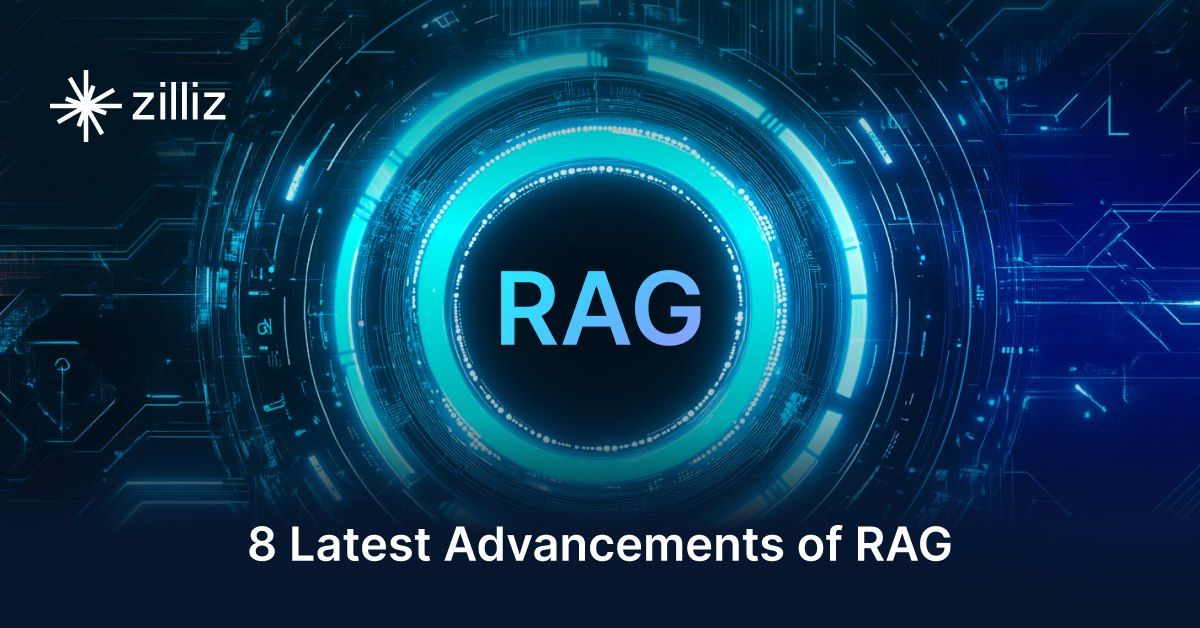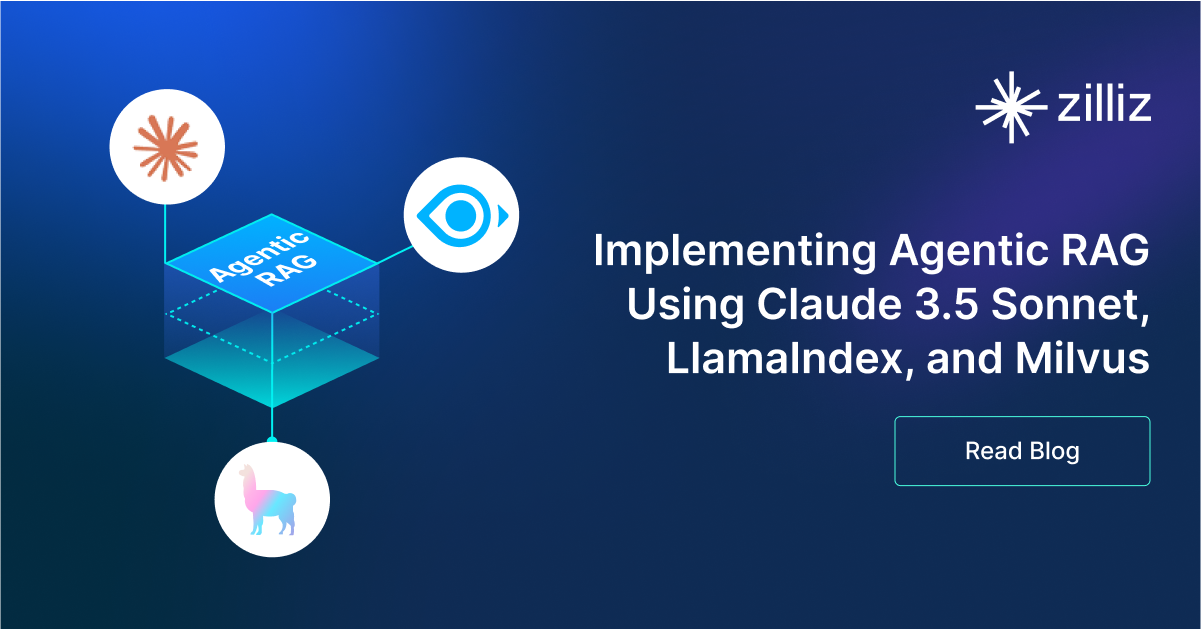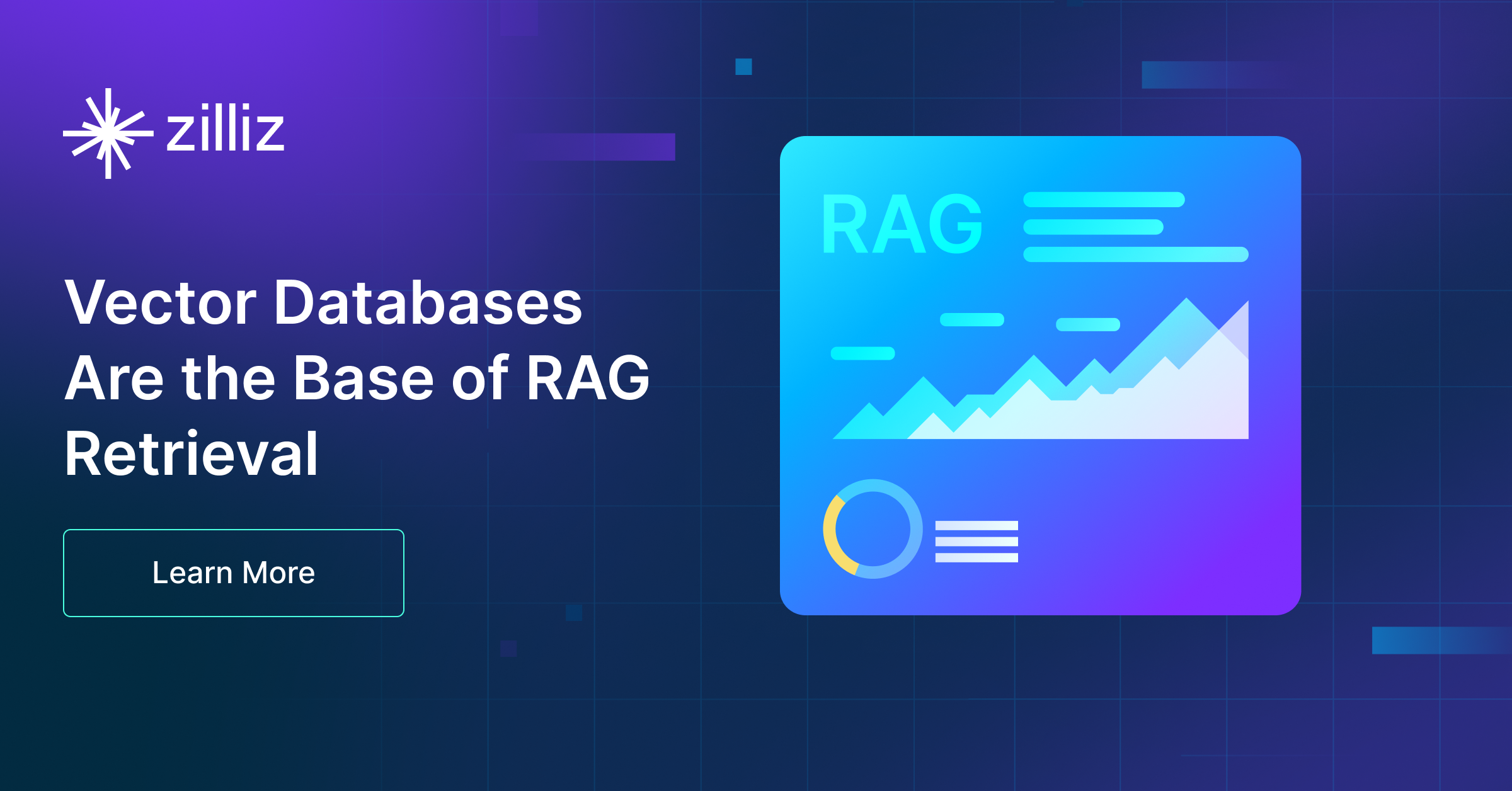Build RAG Chatbot with Haystack, Haystack In-memory store, Mistral Small, and HuggingFace all-MiniLM-L12-v1
Introduction to RAG
Retrieval-Augmented Generation (RAG) is a game-changer for GenAI applications, especially in conversational AI. It combines the power of pre-trained large language models (LLMs) like OpenAI’s GPT with external knowledge sources stored in vector databases such as Milvus and Zilliz Cloud, allowing for more accurate, contextually relevant, and up-to-date response generation. A RAG pipeline usually consists of four basic components: a vector database, an embedding model, an LLM, and a framework.
Key Components We'll Use for This RAG Chatbot
This tutorial shows you how to build a simple RAG chatbot in Python using the following components:
- Haystack: An open-source Python framework designed for building production-ready NLP applications, particularly question answering and semantic search systems. Haystack excels at retrieving information from large document collections through its modular architecture that combines retrieval and reader components. Ideal for developers creating search applications, chatbots, and knowledge management systems that require efficient document processing and accurate information extraction from unstructured text.
- Haystack in-memory store: a very simple, in-memory document store with no extra services or dependencies. It is great for experimenting with Haystack, and we do not recommend using it for production. If you want a much more scalable solution for your apps or even enterprise projects, we recommend using Zilliz Cloud, which is a fully managed vector database service built on the open-source Milvusand offers a free tier supporting up to 1 million vectors.)
- Mistral Small: A compact, high-efficiency AI model optimized for fast text processing and real-time applications. It excels in tasks like conversational AI, text summarization, and content moderation, offering low latency and cost-effective performance. Ideal for businesses and developers seeking scalable NLP solutions with minimal computational overhead.
- HuggingFace all-MiniLM-L12-v1: A compact sentence embedding model designed to convert text into dense vector representations for semantic understanding. It balances speed and efficiency with strong performance in tasks like semantic search, text clustering, and retrieval-augmented generation. Ideal for applications requiring low-latency inference or resource-constrained environments while maintaining robust semantic analysis capabilities.
By the end of this tutorial, you’ll have a functional chatbot capable of answering questions based on a custom knowledge base.
Note: Since we may use proprietary models in our tutorials, make sure you have the required API key beforehand.
Step 1: Install and Set Up Haystack
import os
import requests
from haystack import Pipeline
from haystack.components.converters import MarkdownToDocument
from haystack.components.preprocessors import DocumentSplitter
from haystack.components.writers import DocumentWriter
Step 2: Install and Set Up Mistral Small
To use Mistral models, you need first to get a Mistral API key. You can write this key in:
- The
api_keyinit parameter using Secret API - The
MISTRAL_API_KEYenvironment variable (recommended)
Now, after you get the API key, let's install the Install the mistral-haystack package.
pip install mistral-haystack
from haystack_integrations.components.generators.mistral import MistralChatGenerator
from haystack.components.generators.utils import print_streaming_chunk
from haystack.dataclasses import ChatMessage
from haystack.utils import Secret
generator = MistralChatGenerator(api_key=Secret.from_env_var("MISTRAL_API_KEY"), streaming_callback=print_streaming_chunk, model='mistral-small-latest')
Step 3: Install and Set Up HuggingFace all-MiniLM-L12-v1
Haystack'sHuggingFaceAPITextEmbedder can be used to embed strings with different Hugging Face APIs:
The component uses a HF_API_TOKEN environment variable by default. Otherwise, you can pass a Hugging Face API token at initialization with token – see code examples below. The token is needed:
- If you use the Serverless Inference API, or
- If you use Inference Endpoints.
Here, in this tutorial, we'll use the Free Serverless Inference API. Let's install and set up the model.
To use this API, you need a free Hugging Face token. The Embedder expects the model in api_params.
from haystack.components.embedders import HuggingFaceAPITextEmbedder
from haystack.utils import Secret
from haystack.components.embedders import HuggingFaceAPIDocumentEmbedder
from haystack.dataclasses import Document
text_embedder = HuggingFaceAPITextEmbedder(api_type="serverless_inference_api",
api_params={"model": "sentence-transformers/all-MiniLM-L12-v1"},
token=Secret.from_token("<your-api-key>"))
document_embedder = HuggingFaceAPIDocumentEmbedder(api_type="serverless_inference_api",
api_params={"model": "sentence-transformers/all-MiniLM-L12-v1"},
token=Secret.from_token("<your-api-key>"))
Step 4: Install and Set Up Haystack In-memory store
from haystack.document_stores.in_memory import InMemoryDocumentStore
from haystack.components.retrievers import InMemoryEmbeddingRetriever
document_store = InMemoryDocumentStore()
retriever=InMemoryEmbeddingRetriever(document_store=document_store))
Step 5: Build a RAG Chatbot
Now that you’ve set up all components, let’s start to build a simple chatbot. We’ll use the Milvus introduction doc as a private knowledge base. You can replace it your own dataset to customize your RAG chatbot.
url = 'https://raw.githubusercontent.com/milvus-io/milvus-docs/refs/heads/v2.5.x/site/en/about/overview.md'
example_file = 'example_file.md'
response = requests.get(url)
with open(example_file, 'wb') as f:
f.write(response.content)
file_paths = [example_file] # You can replace it with your own file paths.
indexing_pipeline = Pipeline()
indexing_pipeline.add_component("converter", MarkdownToDocument())
indexing_pipeline.add_component("splitter", DocumentSplitter(split_by="sentence", split_length=2))
indexing_pipeline.add_component("embedder", document_embedder)
indexing_pipeline.add_component("writer", DocumentWriter(document_store))
indexing_pipeline.connect("converter", "splitter")
indexing_pipeline.connect("splitter", "embedder")
indexing_pipeline.connect("embedder", "writer")
indexing_pipeline.run({"converter": {"sources": file_paths}})
# print("Number of documents:", document_store.count_documents())
question = "What is Milvus?" # You can replace it with your own question.
retrieval_pipeline = Pipeline()
retrieval_pipeline.add_component("embedder", text_embedder)
retrieval_pipeline.add_component("retriever", retriever)
retrieval_pipeline.connect("embedder", "retriever")
retrieval_results = retrieval_pipeline.run({"embedder": {"text": question}})
# for doc in retrieval_results["retriever"]["documents"]:
# print(doc.content)
# print("-" * 10)
from haystack.utils import Secret
from haystack.components.builders import PromptBuilder
retriever=InMemoryEmbeddingRetriever(document_store=document_store)
text_embedder = HuggingFaceAPITextEmbedder(api_type="serverless_inference_api",
api_params={"model": "sentence-transformers/all-MiniLM-L12-v1"},
token=Secret.from_token("<your-api-key>"))
prompt_template = """Answer the following query based on the provided context. If the context does
not include an answer, reply with 'I don't know'.\n
Query: {{query}}
Documents:
{% for doc in documents %}
{{ doc.content }}
{% endfor %}
Answer:
"""
rag_pipeline = Pipeline()
rag_pipeline.add_component("text_embedder", text_embedder)
rag_pipeline.add_component("retriever", retriever)
rag_pipeline.add_component("prompt_builder", PromptBuilder(template=prompt_template))
rag_pipeline.add_component("generator", generator)
rag_pipeline.connect("text_embedder.embedding", "retriever.query_embedding")
rag_pipeline.connect("retriever.documents", "prompt_builder.documents")
rag_pipeline.connect("prompt_builder", "generator")
results = rag_pipeline.run({"text_embedder": {"text": question}, "prompt_builder": {"query": question},})
print('RAG answer:\n', results["generator"]["replies"][0])
Optimization Tips
As you build your RAG system, optimization is key to ensuring peak performance and efficiency. While setting up the components is an essential first step, fine-tuning each one will help you create a solution that works even better and scales seamlessly. In this section, we’ll share some practical tips for optimizing all these components, giving you the edge to build smarter, faster, and more responsive RAG applications.
Haystack optimization tips
To optimize Haystack in a RAG setup, ensure you use an efficient retriever like FAISS or Milvus for scalable and fast similarity searches. Fine-tune your document store settings, such as indexing strategies and storage backends, to balance speed and accuracy. Use batch processing for embedding generation to reduce latency and optimize API calls. Leverage Haystack's pipeline caching to avoid redundant computations, especially for frequently queried documents. Tune your reader model by selecting a lightweight yet accurate transformer-based model like DistilBERT to speed up response times. Implement query rewriting or filtering techniques to enhance retrieval quality, ensuring the most relevant documents are retrieved for generation. Finally, monitor system performance with Haystack’s built-in evaluation tools to iteratively refine your setup based on real-world query performance.
Haystack in-memory store optimization tips
Haystack in-memory store is just a very simple, in-memory document store with no extra services or dependencies. We recommend that you just experiment it with RAG pipeline within your Haystack framework, and we do not recommend using it for production. If you want a much more scalable solution for your apps or even enterprise projects, we recommend using Zilliz Cloud, which is a fully managed vector database service built on the open-source Milvusand offers a free tier supporting up to 1 million vectors
Mistral Small optimization tips
To optimize Mistral Small in a RAG setup, prioritize efficient context chunking (256-512 tokens) to balance relevance and processing speed. Use metadata filtering during retrieval to reduce noise and improve input quality. Enable FlashAttention for faster inference and lower memory usage. Fine-tune Mistral Small on domain-specific data to enhance answer accuracy. Implement query batching for parallel processing and leverage quantization (e.g., 4-bit) to reduce model size. Monitor latency and adjust temperature (0.2-0.5) to balance creativity vs. precision. Cache frequent queries to minimize redundant computations.
HuggingFace all-MiniLM-L12-v1 optimization tips
To optimize the all-MiniLM-L12-v1 model in a RAG setup: preprocess input data by cleaning and normalizing text (lowercasing, removing special characters) to improve embedding quality. Use batch inference for embedding generation to maximize GPU utilization. Fine-tune the model on domain-specific data via contrastive learning to enhance retrieval relevance. Reduce vector dimensionality via PCA if storage or latency is critical. Cache frequently accessed embeddings to minimize recomputation. Quantize the model with Hugging Face’s transformers library for faster inference with minimal accuracy loss. Regularly benchmark performance against your retrieval metrics (e.g., recall@k) to validate optimizations.
By implementing these tips across your components, you'll be able to enhance the performance and functionality of your RAG system, ensuring it’s optimized for both speed and accuracy. Keep testing, iterating, and refining your setup to stay ahead in the ever-evolving world of AI development.
RAG Cost Calculator: A Free Tool to Calculate Your Cost in Seconds
Estimating the cost of a Retrieval-Augmented Generation (RAG) pipeline involves analyzing expenses across vector storage, compute resources, and API usage. Key cost drivers include vector database queries, embedding generation, and LLM inference.
RAG Cost Calculator is a free tool that quickly estimates the cost of building a RAG pipeline, including chunking, embedding, vector storage/search, and LLM generation. It also helps you identify cost-saving opportunities and achieve up to 10x cost reduction on vector databases with the serverless option.
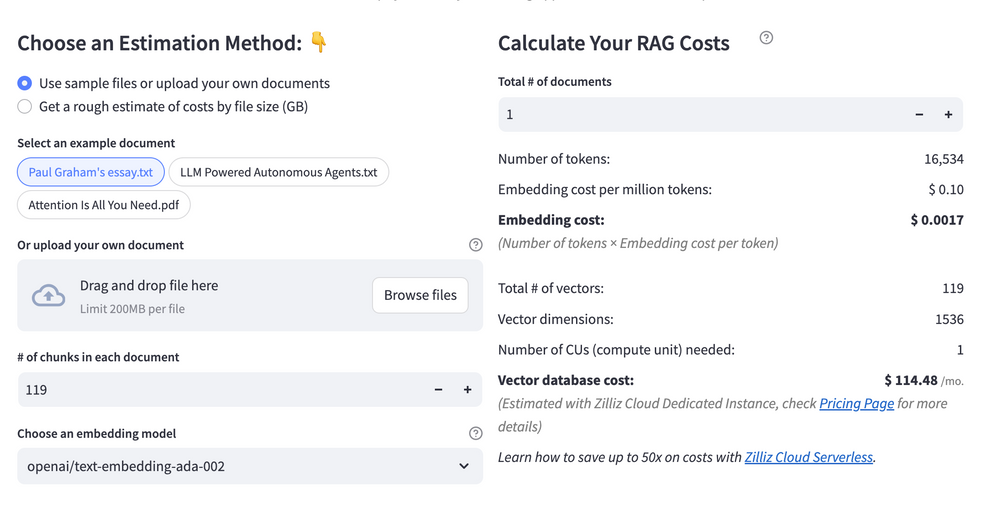 Calculate your RAG cost
Calculate your RAG cost
What Have You Learned?
By diving into this tutorial, you’ve unlocked the power of combining cutting-edge tools to build a fully functional RAG system from scratch! You learned how Haystack, the flexible framework, acts as the backbone, seamlessly connecting components like the Haystack In-Memory Store (your lightweight vector database) to store and retrieve embeddings efficiently. You saw how the Hugging Face all-MiniLM-L12-v1 embedding model transforms text into compact, meaningful vectors, striking a perfect balance between speed and accuracy. Then, Mistral Small stepped in as the LLM powerhouse, generating insightful, context-aware responses by leveraging retrieved data. Together, these tools form a dynamic pipeline that fetches relevant information and crafts intelligent answers—like giving your app a supercharged brain! Along the way, you picked up pro tips for optimizing performance, like tweaking chunk sizes and filtering metadata, and even discovered a free RAG cost calculator to estimate expenses and scale smarter.
But this is just the beginning! You’ve now got the building blocks to create RAG applications that feel almost magical—whether for customer support, research, or creative projects. Imagine tailoring this system to your unique needs, experimenting with different models, or adding your own twist to the pipeline. The tools are in your hands, and the possibilities are endless. So why wait? Dive in, start tinkering, and watch your ideas come to life. Build something bold, optimize fearlessly, and let your creativity run wild. The future of intelligent apps is yours to shape—go make it awesome! 🚀
Further Resources
🌟 In addition to this RAG tutorial, unleash your full potential with these incredible resources to level up your RAG skills.
- How to Build a Multimodal RAG | Documentation
- How to Enhance the Performance of Your RAG Pipeline
- Graph RAG with Milvus | Documentation
- How to Evaluate RAG Applications - Zilliz Learn
- Generative AI Resource Hub | Zilliz
We'd Love to Hear What You Think!
We’d love to hear your thoughts! 🌟 Leave your questions or comments below or join our vibrant Milvus Discord community to share your experiences, ask questions, or connect with thousands of AI enthusiasts. Your journey matters to us!
If you like this tutorial, show your support by giving our Milvus GitHub repo a star ⭐—it means the world to us and inspires us to keep creating! 💖
- Introduction to RAG
- Key Components We'll Use for This RAG Chatbot
- Step 1: Install and Set Up Haystack
- Step 2: Install and Set Up Mistral Small
- Step 3: Install and Set Up HuggingFace all-MiniLM-L12-v1
- Step 4: Install and Set Up Haystack In-memory store
- Step 5: Build a RAG Chatbot
- Optimization Tips
- RAG Cost Calculator: A Free Tool to Calculate Your Cost in Seconds
- What Have You Learned?
- Further Resources
- We'd Love to Hear What You Think!
Content
Vector Database at Scale
Zilliz Cloud is a fully-managed vector database built for scale, perfect for your RAG apps.
Try Zilliz Cloud for Free